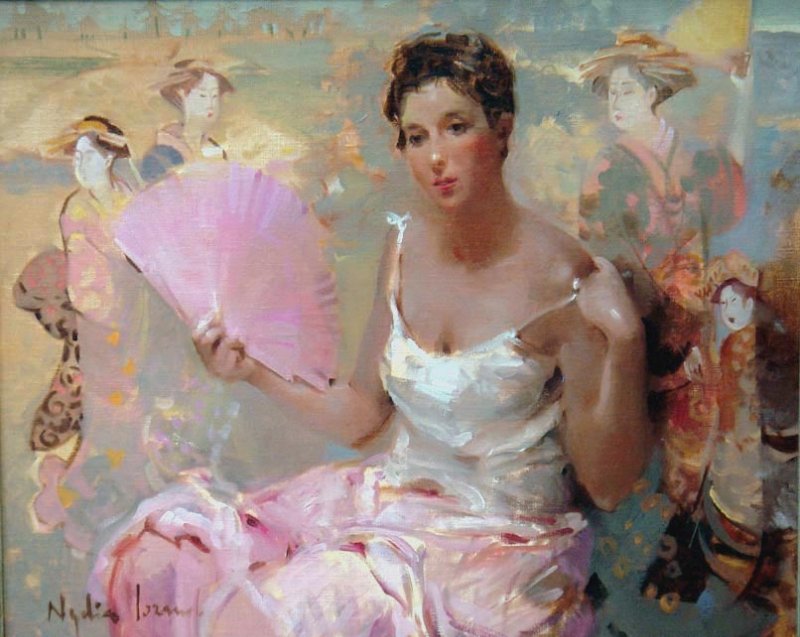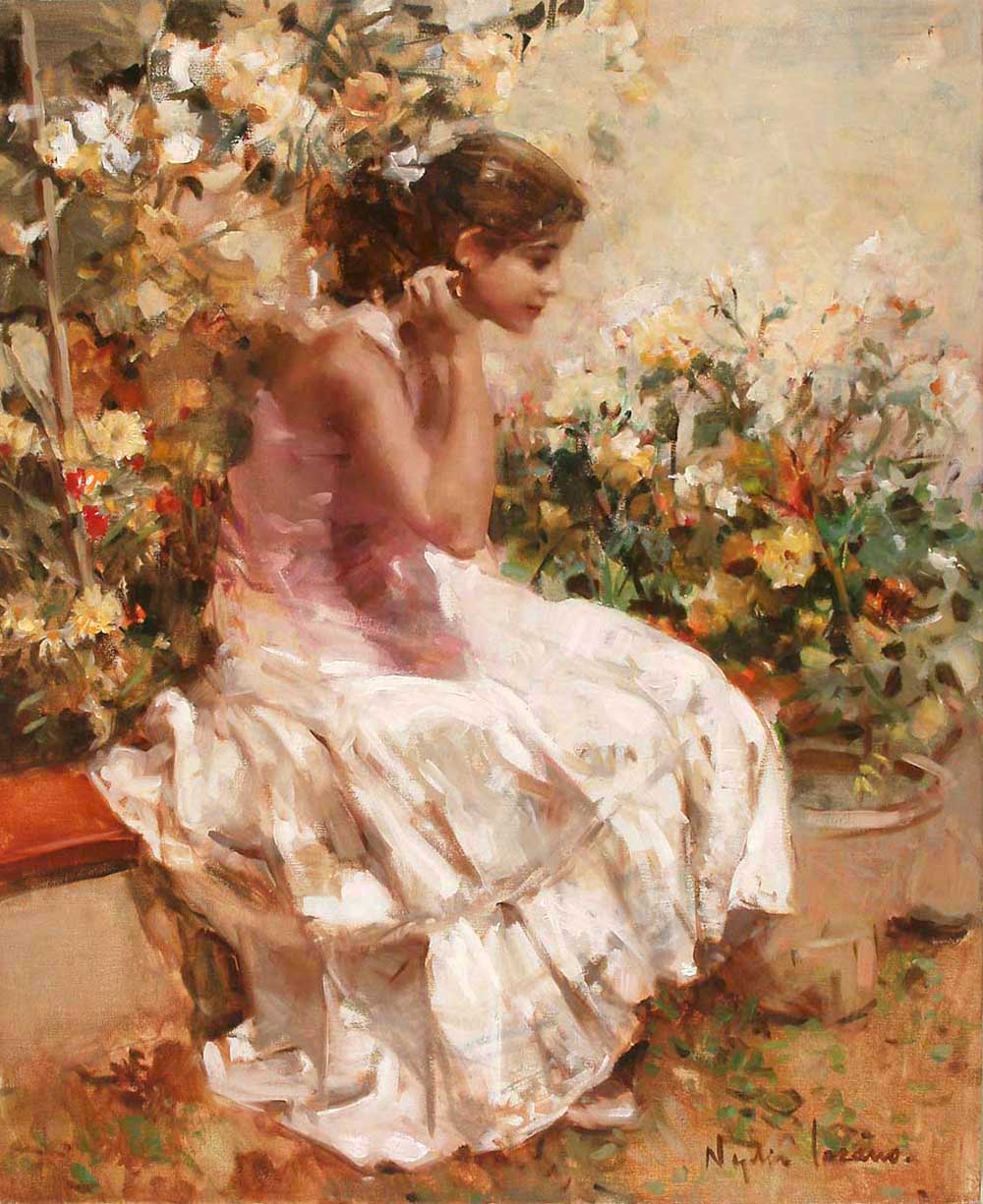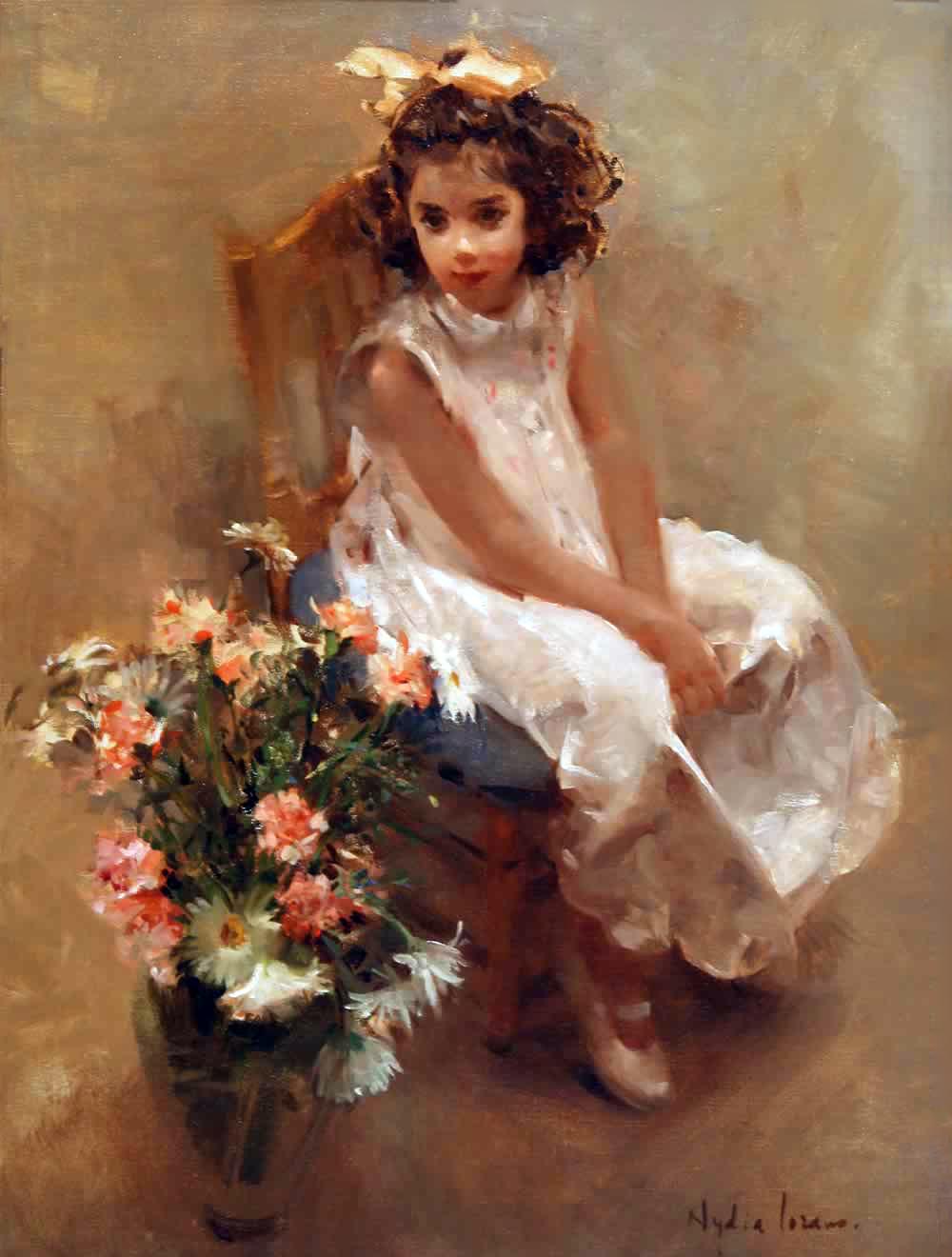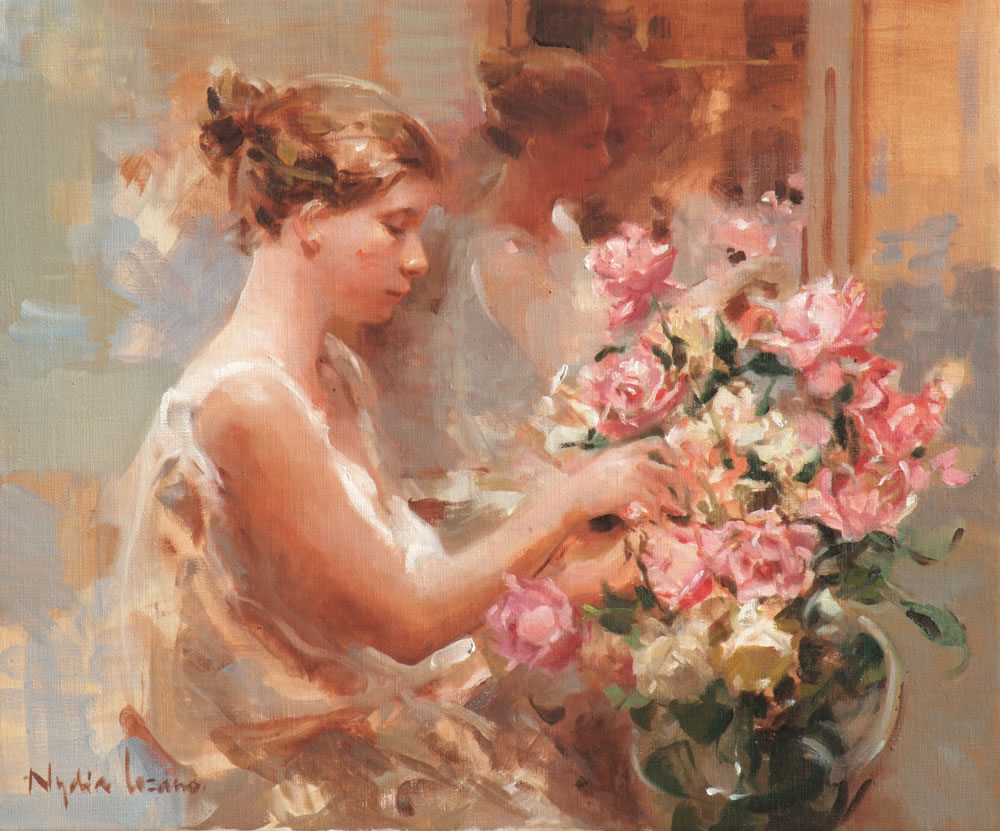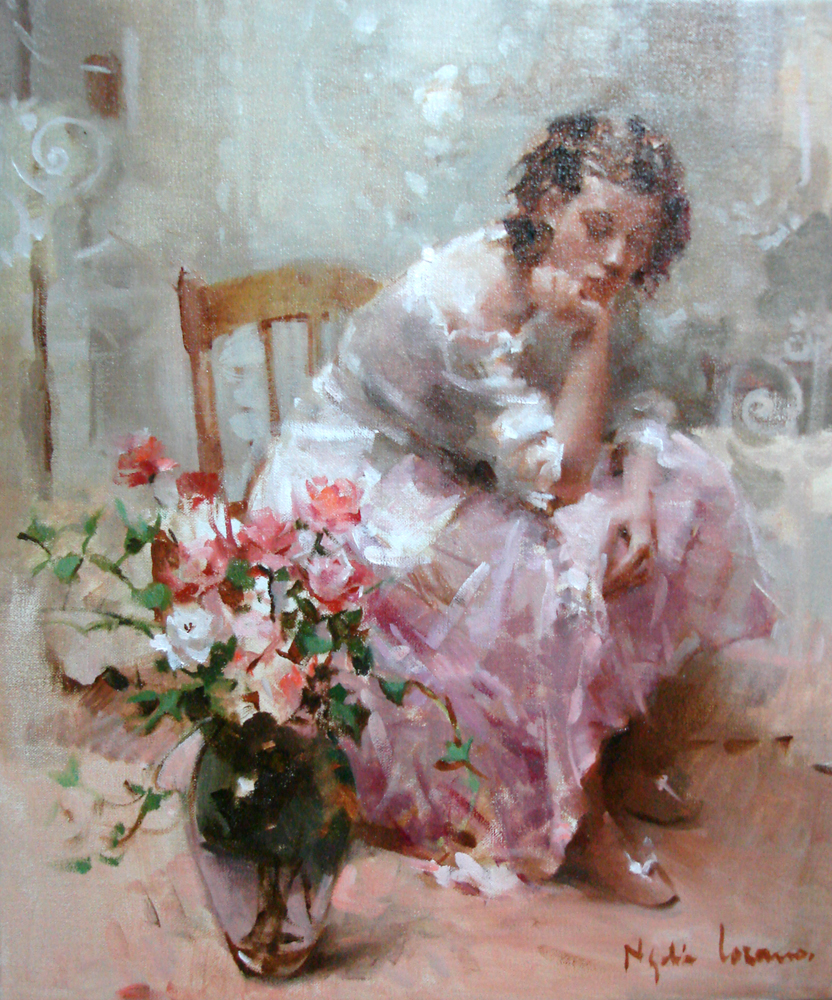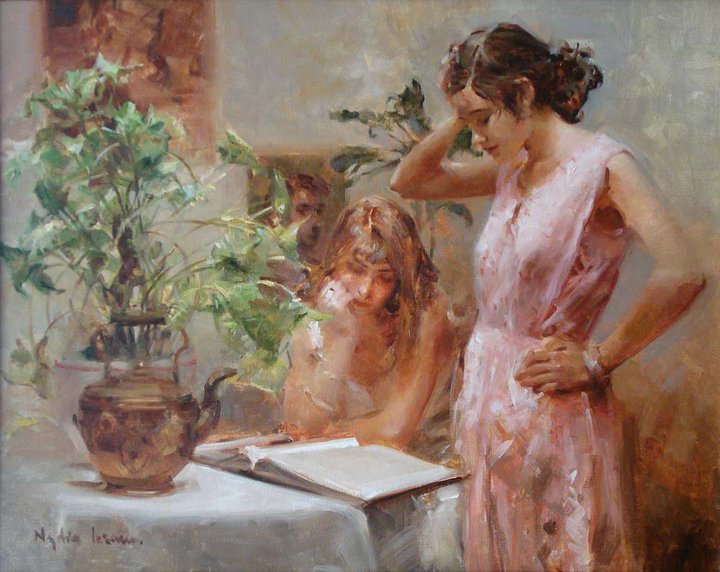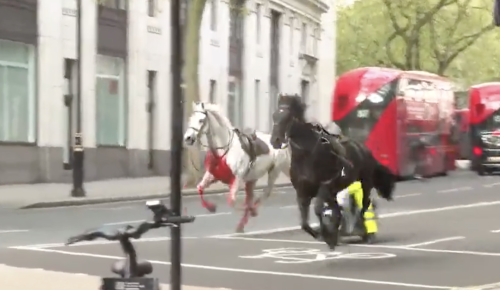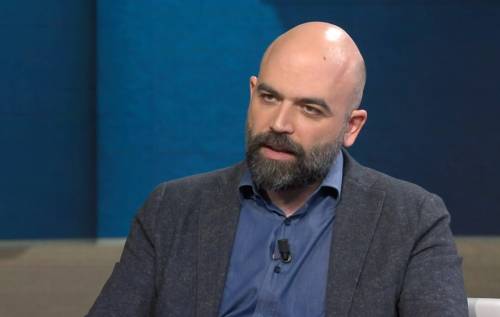Raffaello - Scuola di Atene -Platone /
Raphael - The School of Athens (
1509-1511)
"Music is a moral law.
It gives soul to the universe,
wings to the mind,
flight to the imagination,
and charm and gaiety to life and to everything".
"La musica è una luce morale.
Essa dona un’anima ai nostri cuori,
delle ali ai pensieri,
Uno sviluppo all’immaginazione,
Essa è un carme alla tristezza,
alla gaiezza, alla vita,
a tutte le cose".
Platone Busto Platone rinvenuto nell'area sacra in Largo Argentina (1925) a Roma, conservata nel Musei Capitolini
José de Ribera (Spanish painter,1591-1652) Platón, 1637
Leo von Klenze (Pittore Tedesco 1784-1864) | Akropolis, la Città-stato dell'antica Grecia
The Republic (Greek: Πολιτεία, Politeia; Latin: De Re Publica) is a Socratic dialogue, written by Plato around 380 BC, concerning the definition of justice (δικαιοσύνη), the order and character of the just city-state and the just man ecc..
The Philosophy of Music The Republic, Book III
Then now, my friend, I said, that part of music or literary education which relates to the story or myth may be considered to be finished; for the matter and manner have both been discussed.
I think so too, he said.
Next in order will follow melody and song.
That is obvious.
Everyone now would be able to discover what we ought to say about them, if we are to be consistent with ourselves.
I fear, said Glaucon, laughing, that the word "everyone" hardly includes me, for I cannot at the moment say what they should be, though I have a suspicion.
At any rate you are aware that a song or ode has three parts – the words, the melody and the rhythm.
Yes, he said; so as that I know.
And as for the words, there will surely be no difference between words which are and which are not set to music; both will conform to the same laws, and these have already been determined by us?
Yes.
And the melody and rhythm will be in conformity with the words?
Certainly.
We were saying, when we spoke of the subject-matter, that we had no need of lamentations and strains of sorrow?
True.
And which are the harmonies expressive of sorrow? You are musical and can tell me.
The harmonies which you mean are the mixed or tenor Lydian, and the full-toned or bass Lydian, and such-like.
These then, I said, must be banished; even to women who have a character to maintain they are of no use, and much less to men.
Certainly.
In the next place, drunkenness and softness and indolence are utterly unbecoming the character of our guardians.
Utterly unbecoming?
And which are the soft and convivial harmonies?
The Ionian, he replied, and some of the Lydian which are termed "relaxed".
Well, and are these of any use for warlike men?
Quite the reverse, he replied; and if so the Dorian and the Phrygian are the only ones which you have left.
I answered: Of the harmonies I know nothing, but would have you leave me one which can render the note or accent which a brave man utters in warlike action and in stern resolve; and when his cause is failing, and he is going to wounds or death or is overtaken by disaster in some other form, at every such crisis he meets the blows of fortune with firm step and a determination to endure; and an opposite kind for times of peace and freedom of action, when there is no pressure of necessity, and he is seeking to persuade God by prayer, or man by instruction and admonition, or when on the other hand he is expressing his willingness to yield to the persuasion or entreaty or admonition of others. And when in this manner he has attained his end, I would have the music show him not carried away by his success, but acting moderately and wisely in all circumstances, and acquiescing in the event. These two harmonies I ask you to leave; the strain of necessity and the strain of freedom, the strain of the unfortunate and the strain of the fortunate, the strain of courage, and the strain of temperance; these, I say, leave.
And these, he replied, are the Dorian and the Phrygian harmonies of which I was just now speaking.
Then, I said, if these and these only are to be used in our songs and melodies, we shall not want multiplicity of strings or a panharmonic scale?
I suppose not.
Then we shall not maintain the artificers of lyres with three corners and complex scales, or the makers of any other many-stringed, curiously harmonized instruments?
Certainly not.
But what do you say to flute-makers and flute-players? Would you admit them into our State when you reflect that in this composite use of harmony the flute is worse than any stringed instrument; even the panharmonic music is only imitation of the flute?
Clearly not.
There remain then only the lyre and the harp for use in the city, and the shepherds in the country may have some kind of pipe.
That is surely the conclusion to be drawn from the argument.
The preferring of Apollo and his instruments to Marsyas and his instruments is not at all strange, I said.
Not at all, he replied.
Then let us now finish the purgation, I said. Next in order to harmonies, rhythms will naturally follow, and they should be subject to the same rules, for we ought not to seek out complex systems of metre, and a variety of feet, but rather to discover what rhythms are the expressions of a courageous and harmonious life; and when we have found them, we shall adapt the foot and the melody to words having a like spirit, not the words to the foot and melody. To say what these rhythms are will be your duty – you must teach me them, as you have already taught me the harmonies.
But, indeed, he replied, I cannot tell you. I know from observation that there are some three principles of rhythm out of which metrical systems are framed, just as in sounds there are four notes out of which all the harmonies are composed. But of what sort of lives they are severally the imitations I am unable to say.
Then, I said, we must take Damon into our counsels; and he will tell us what rhythms are expressive of meanness, or insolence, or fury, or other unworthiness, and are to be reserved for the expression of opposite feelings. And I think that I have an indistinct recollection of his mentioning a complex Cretic rhythm; also a dactylic or heroic, and he arranged them in some manner which I do not quite understand, making the rhythms equal in the rise and fall of the foot, long and short alternating; and unless I am mistaken, he spoke of an iambic as well as a trochaic rhythm, and assigned to them short and long quantities. Also in some cases he appeared to praise or censure the movement of the foot quite as much as the rhythm; or perhaps a combination of the two; for I am not certain what he meant. These matters, however, as I was saying, had better be referred to Damon himself, for the analysis of the subject would be difficult, you know?
Rather so, I should say.
But it does not require much analysis to see that grace or the absence of grace accompanies good or bad rhythm.
None at all.
And also that good and bad rhythm naturally assimilate to a good and bad style; and that harmony and discord in like manner follow style; for our principle is that rhythm and harmony are regulated by the words, and not the words by them.
Just so, he said, they should follow the words.
And will not the words and the character of the style depend on the temper of the soul?
Yes.
And everything else on the style?
Yes.
Then beauty of style and harmony and grace and good rhythm depend on simplicity, – I mean the true simplicity of a rightly and nobly ordered mind and character, not that other simplicity which is only a euphemism for folly?
Very true, he replied.
[Socrates expands on the role of the artist in the ideal State and argues that unsuitable artists should be prevented from practising their art.]
And therefore, I said, Glaucon, musical training is a more potent instrument than any other, because rhythm and harmony find their way into the inward places of the soul, on which they mightily fasten, imparting grace, and making the soul of him who is rightly educated graceful, or of him who is ill-educated ungraceful: and also because he who has received this true education of the inner being will most shrewdly perceive omissions or faults in art and nature, and with a true taste, while he praises and rejoices over and receives into his soul the good, and becomes noble and good, he will justify blame and hate the bad, now in the days of his youth, even before he will recognize and salute the friend with whom his education has made him long familiar.
Yes, he said, I quite agree with you in thinking that it is for such reasons that they should be trained in music…
Even so, as I maintain, neither we nor the guardians, whom we say that we have to educate, can ever become musical until we and they know the essential forms of temperance, courage, liberality, magnanimity, and their kindred, as well as the contrary forms, in all their combinations, and can recognise then and their images wherever they are found, not slighting them either in small things or great, but believing them all to be within the sphere of one art and study.
Most assuredly.
And then nobility of soul is observed in harmonious union with beauty of form, and both are cast from the same mould, that will be the fairest of sights to him who has en eye to see it?
The fairest indeed.
And the fairest is also the loveliest?
That may be assumed.
And it is with human beings who most display such harmony that a musical man will be most in love; but he will not love any who do not possess it.
That is true, he replied, if the deficiency be in the soul; but if there be any bodily defect he will be patient of it, and may even approve it.
[A short discussion of the nature of pleasure.]
Thus much of music, and the ending is appropriate; for what should be the end of music if not the love of beauty..?
![]()
Busto virile Platone, Museo Archeologico di Napoli
Plato, Ceiling of Duke Humpfrey's Library, Oxford
- Plato and Aristotle, or Philosophy.
Marble panel from the North side, lower basement of the bell tower of Florence, Italy.
- Museo dell'Opera del Duomo.
- Platone et Aristotele o la Filosofia.
Marmo, proviene dal lato nord del campanile di Firenze, basamento inferiore.
Museo dell'Opera del Duomo, 1437-1439
- Plato and Aristotle, or Philosophy.
Marble panel from the North side, lower basement of the bell tower of Florence, Italy.
- Museo dell'Opera del Duomo.
- Platone et Aristotele o la Filosofia.
Marmo, proviene dal lato nord del campanile di Firenze, basamento inferiore.
Museo dell'Opera del Duomo, 1437-1439
Plato in front of the Academy of Athens by Leonidas Drosis (Greek Sculptor 1836-1880)
Plato in front of the Academy of Athens by Leonidas Drosis (Greek Sculptor 1836-1880)
Plato in front of the Academy of Athens by Leonidas Drosis (Greek Sculptor 1836-1880)
Plato in front of the Academy of Athens by Leonidas Drosis (Greek Sculptor 1836-1880)
Plato in front of the Academy of Athens by Leonidas Drosis (Greek Sculptor 1836-1880)
Plato in front of the Academy of Athens by Leonidas Drosis (Greek Sculptor 1836-1880)
Plato in front of the Academy of Athens by Leonidas Drosis (Greek Sculptor 1836-1880)
Plato's Academy mosaic - Roman mosaic of the 1st century BCE from
Pompeiinow at the Museo Nazionale Archologico, Naples
Raffaello - Scuola di Atene -Platone /
Raphael - The School of Athens (
1509-1511)
Raffaello - Scuola di Atene -Platone / Raphael - The School of Athens (1509-1511)
La Repubblica (in greco antico: Πολιτεία, Politéia) è un'opera filosofica in forma di dialogo, scritta approssimativamente tra il 390 e il 360 a.C. dal filosofo greco Platone, la quale ha avuto enorme influenza nel pensiero occidentale.
La Filosofia della Musica, La Repubblica, Libro 3
"Ora, caro amico", ripresi, "è probabile che abbiamo trattato da cima a fondo l'aspetto della musica relativo alle narrazioni e ai miti: è stato stabilito ciò che si deve dire e come lo si deve dire".
"Sembra anche a me", disse.
"E ora", domandai, "ci restano da trattare i generi del canto e delle melodie?" "è chiaro".
"Ma se vogliamo accordare il nostro discorso con le premesse, non sarebbe ormai facile per chiunque trovare le parole adatte a spiegare come devono essere questi generi?" E Glaucone sorridendo disse: "Io, Socrate, rischio di rimanere fuori da questo chiunque. Non sono in grado, almeno per ora, di comprendere di quali generi dobbiamo trattare; tuttavia posso congetturarlo".
"Se non altro, però", ribattei, "sei in grado di asserire questo primo punto, ovvero che la melodia è composta di tre elementi: la parola, l'armonia e il ritmo".
"Sì ", rispose, "questo sì ".
"Ma per quanto concerne la parola essa non differisce in nulla dalla semplice recitazione, poiché la si deve esprimere nelle stesse forme e nelle stesse modalità che abbiamo fissato prima?" "è vero", disse.
"E l'armonia e il ritmo devono seguire la parola".
"Come no?" "Per la verità abbiamo detto che nei discorsi non c'è alcun bisogno di lamenti e gemiti".
"No di certo".
"Quali sono dunque le armonie lamentose? Dimmelo tu, che sei esperto di musica".
"La mixolidia, la sintonolidia e altre simili". "Queste allora", chiesi, "si devono escludere? Sono inutili anche per le donne che devono essere oneste, figurarsi per gli uomini!".
"Giusto".
"Ma per i guardiani l'ubriachezza, la mollezza e la pigrizia sono più che mai disdicevoli".
"Come no?" "E quali sono le armonie molli e adatte ai simposi?" "Certe armonie ioniche e lidie", rispose, "che si chiamano appunto rilassate".
"E tu, caro amico, potrai mai usarle con i guerrieri?" "Nient'affatto", rispose; "ma forse ti rimangono soltanto la dorica e la frigia".
"Non conosco le armonie", dissi, "ma tu conserva quella che sappia imitare convenientemente la voce e gli accenti di un uomo che dimostra coraggio in un'azione di guerra o in una qualsiasi opera violenta, e che anche quando non ha avuto successo o va incontro alle ferite o alla morte o è caduto in altra disgrazia, in tutte queste circostanze lotta contro la sorte con disciplina e fermezza; e conserva pure un'altra armonia, capace di imitare un uomo impegnato in un'azione pacifica non per costrizione ma per sua volontà che cerca di persuadere un dio con la preghiera o un uomo con l'ammaestramento e i consigli, o al contrario si mostra disponibile quando un altro lo prega o gli dà ammaestramenti o cerca di dissuaderlo, e in virtù di questo ha ottenuto un risultato conforme ai suoi propositi e non ne va superbo, ma in tutte queste circostanze si comporta con temperanza ed equilibrio, accettando ciò che gli accade. Conserva queste due armonie, una violenta e l'altra
volontaria, che sapranno imitare nel modo migliore le voci di persone sventurate, fortunate, temperanti, coraggiose".
"Ma tu mi chiedi di conservare solo quelle che ho citato prima".
"Allora", ripresi, "nei canti e nelle melodie non avremo bisogno di molti suoni e di armonie complicate".
"Mi pare di no", disse.
"Perciò non manterremo costruttori di trigoni, di pectidi e di tutti gli strumenti policordi e panarmonici".
"Evidentemente no".
"E i costruttori di flauti e i flautisti, li accoglierai nella città? Non è forse questo lo strumento più ricco di suoni, e gli stessi strumenti panarmonici non sono un'imitazione del flauto?" "è chiaro", rispose.
"Allora", feci io, "come strumenti utili nella città ti rimangono la lira e la cetra, mentre nei campi i pastori avranno una specie di zampogna".
"Così almeno ci porta a concludere il discorso", disse.
"D'altronde, caro amico", aggiunsi, "non facciamo nulla di strano se preferiamo Apollo e gli strumenti di Apollo a Marsia e agli strumenti di Marsia". "Non mi pare proprio, per Zeus!".
"Corpo d'un cane!", esclamai. "Senza rendercene conto stiamo di nuovo purgando la città che poc'anzi abbiamo definito immersa nella mollezza!".
"E in ciò operiamo da persone sagge", disse.
"Su", continuai "purghiamola anche del resto. La trattazione dei ritmi si conformerà a quella delle armonie: non dovremo andare in cerca dei ritmi variegati e di metri d'ogni genere, ma considerare quali sono i ritmi di una vita ordinata e coraggiosa; e una volta che li avremo individuati, costringere il piede e la melodia a seguire il modo di esprimersi dettato da questa vita, anziché adattare la parola al piede e alla melodia. Quali poi siano questi ritmi, è compito tuo indicarlo, come nel caso delle armonie".
"Ma per Zeus", obiettò, "non ne sono capace! Potrei dire, perché l'ho osservato, che i generi da cui si combinano i metri sono tre, come nei suoni ce ne sono quattro da cui derivano tutte le melodie; ma non so dire che tipo di imitazioni siano, e di quale vita".
"Ma su questo", dissi, "ci consulteremo anche con Damone: quali metri si addicono alla meschinità e all'insolenza, o alla follia e ad altre manifestazioni di malvagità, e quali ritmi bisogna riservare ai sentimenti opposti.
Credo di averlo sentito parlare vagamente dell'enoplio, un certo metro composto, del dattilo e del verso eroico, che lui non so come ordinava con un'uguale ripartizione di arsi e tesi; e poi, mi sembra, faceva menzione di un giambo e di un altro piede, il trocheo, ai quali adattava le lunghe e le brevi. E mi pare che per alcuni di questi metri criticasse o lodasse i movimenti del piede non meno dei ritmi stessi, o qualcosa di comune a entrambi, non lo so di preciso... ma queste cose, come ho detto, rifiliamole a Damone, poiché distinguerle non è affare di poco conto. Non credi?" "Certo per Zeus!".
"Ma sei in grado di distinguere almeno questo, che la presenza e la mancanza di decoro si accompagnano alla presenza e alla mancanza di ritmo?" "Come no?" "Ma la presenza e la mancanza di ritmo seguono, per somiglianza, l'una lo stile bello, l'altra quello opposto, e lo stesso vale per l'armonia e la disarmonia, se il ritmo e l'armonia, come si diceva prima, si regolano sulla parola e non viceversa".
"Certo", confermò, "sono loro che devono seguire la parola".
"E l'espressione e i vocaboli", domandai, "non seguono il carattere dell'anima?" "Come no?" "Mentre il resto dipende dallo stile?" "Sì".
"Quindi la scelta felice dei vocaboli, l'armonia, il decoro e il buon ritmo conseguono dalla semplicità, non quella che è stoltezza ma noi addolciamo con questo eufemismo, ma quella disposizione d'animo contraddistinta da un carattere veramente buono e nobile".
"Senz'altro", disse.
"E non è forse questo che i giovani devono perseguire in ogni situazione, se vogliono adempiere il loro compito?"
"Sì , è questo".
"Ma queste qualità informano anche la pittura e le altre arti simili, la tessitura, il ricamo, l'architettura e la fabbricazione di ogni altra suppellettile, e inoltre la natura dei corpi e degli altri organismi; in tutto questo c'è decoro o bruttezza. La mancanza di decoro, di ritmo e dì armonia è imparentata con la bassezza di linguaggio e di carattere, mentre le qualità opposte sono sorelle e imitazioni dell'opposto, cioè di un carattere saggio e onesto".
"Senza dubbio", disse.
"Dobbiamo dunque sorvegliare soltanto i poeti e costringerli a rappresentare nelle loro opere la bontà di carattere, o altrimenti a non poetare presso di noi; oppure dobbiamo sorvegliare anche gli altri artefici e impedire loro di introdurre ciò che è moralmente malvagio, sfrenato, ignobile e indecoroso sia nelle rappresentazioni di esseri viventi sia negli edifici sia in ogni altro manufatto, o altrimenti non permettere di lavorare presso di noi a chi non sia capace di osservare questo
precetto, per evitare che i nostri guardiani, allevati tra immagini disoneste come tra le erbacce, cogliendone poco per volta ogni giorno una grande quantità e pascendosene, accumulino senza avvedersene un unico grande male nella loro anima?
Non bisogna al contrario cercare quegli artefici che sappiano nobilmente seguire le tracce della natura di ciò che è bello e decoroso, affinché i giovani, come chi abita in un luogo salubre, traggano vantaggio da qualunque parte un'impressione di opere belle tocchi la loro vista o il loro udito, come un soffio di vento che porta buona salute da luoghi benefici, e sin dalla fanciullezza li conduca senza che se accorgano alla conformità, all'amicizia e all'accordo con la retta ragione?"
"Questa", rispose, "sarebbe per loro l'educazione di gran lunga migliore".
"E l'educazione musicale, Glaucone", proseguii, "non è forse di estrema importanza per il fatto che il ritmo e l'armonia penetrano nel più profondo dell'anima e vi si apprendono con la massima tenacia, conferendole decoro, e infondono dignità in chi abbia ricevuto una corretta educazione, altrimenti producono l'effetto contrario? Chi è stato educato a dovere in questo campo si accorgerà con grande acutezza di ciò che è difettoso e mal costruito oppure è
imperfetto per natura, e con giusta insofferenza loderà le cose belle e accogliendole con gioia nell'anima saprà nutrirsene per diventare un uomo onesto, mentre biasimerà e detesterà a buon diritto le cose brutte sin da giovane, ancora prima di poterne capire razionalmente il motivo; e una volta acquisita la ragione la saluterà con affetto, riconoscendo la sua grande affinità con l'educazione ricevuta".
"Mi sembra", disse, "che l'educazione musicale abbia questo fine".
"Allo stesso modo", ripresi, "abbiamo acquisito una piena padronanza dell'alfabeto quando ci siamo resi conto che le lettere sono poche e ricompaiono in tutte le parole esistenti, e non le abbiamo trascurate in nessuna combinazione, piccola o grande che fosse, come se lì non occorresse individuarle, ma ci siamo sforzati di riconoscerle ovunque, perché solo così ,
e non prima, saremmo divenuti buoni conoscitori dell'alfabeto..." "è vero".
"Perciò anche le figure delle lettere, se mai apparissero nell'acqua o in uno specchio, non le distingueremo se non conosciamo già le lettere stesse, anzi ciò fa parte della stessa arte e dello stesso studio?" "Senza dubbio".
"Allora, per gli dèi!, come dico di solito, non saremo esperti di musica, noi stessi e i guardiani che sosteniamo di dover educare, se prima non riconosceremo gli aspetti della temperanza, del coraggio, della generosità, della magnanimità e di tutte le virtù loro sorelle, come pure dei vizi a loro contrari che circolano ovunque, e non avvertiremo la loro presenza e quella delle loro copie, senza trascurarne alcuna, negli esseri in cui si trovano, piccoli o grandi che siano, nella convinzione che facciano parte della stessa arte e dello stesso studio?" "è davvero necessario", rispose.
"Perciò", dissi, "quando capita che l'anima di un uomo sia fornita di nobili qualità morali e i tratti del suo aspetto siano in accordo e in armonia con esse, in quanto partecipi della stessa impronta, sarà lo spettacolo più bello che si possa contemplare?" "E come!" "E quanto più una cosa è bella, tanto più è amabile?"
"Come no?"
"Allora il musico potrebbe innamorarsi solo di chi presenta queste doti nella forma più alta, non di chi è privo di armonia".
"No", rispose, "almeno se il difetto fosse nell'anima; se invece fosse nel corpo, lo sopporterebbe, tanto da acconsentire ad amarlo".
"Capisco", feci io, "che ami o hai amato una persona così , e te lo concedo. Ma dimmi questo: la temperanza ha qualcosa in comune con un piacere eccessivo?"
"E come può averlo", rispose, "se questo porta fuori di senno non meno del dolore?" "E con qualche altra virtù?"
"Assolutamente no!".
"E con l'insolenza e la sfrenatezza?" "Più di tutto!".
"Sai dirmi un piacere maggiore e più acuto di quello amoroso?" "No, e neanche uno più folle".
"Il giusto amore invece è la naturale inclinazione ad amare ciò che è ordinato e bello secondo la temperanza e l'armonia della musica?"
"Certamente", rispose.
"Quindi al giusto amore non bisogna accostare nulla che sia folle o affine alla sfrenatezza?" "No, non bisogna".
"Questo piacere va pertanto escluso e non deve avere relazione alcuna con un amante e un amato che si amino davvero?" "
Ma certo, per Zeus!", rispose. "Dobbiamo escluderlo, Socrate!".
"A quanto pare, dunque, nella città da noi fondata stabilirai per legge che l'amante baci l'amato, stia con lui e lo tocchi come un figlio, per un nobile fine e con il suo consenso, ma quanto al resto si comporti con la persona a lui cara in modo tale da non dare mai l'impressione che si spinga con lui troppo oltre questi limiti, altrimenti dovrà sostenere il biasimo di uomo ignorante di musica e inesperto del bello".
"Proprio così ", disse.
"Ma non sembra anche a te", chiesi, "che il nostro discorso sulla musica sia giunto alla conclusione? Esso è terminato proprio là dove deve terminare: la musica trova il suo compimento nell'amore del bello".
![]()
Raffaello - Scuola di Atene / Raphael - The School of Athens (1509-1511)
Raffaello - Scuola di Atene / Raphael - The School of Athens (1509-1511)
Raffaello - Scuola di Atene -Platone / Raphael - The School of Athens (1509-1511)
Raffaello - Scuola di Atene -Platone /
Raphael - The School of Athens (
1509-1511)
Raffaello - Scuola di Atene -Platone / Raphael - The School of Athens (1509-1511)
Raffaello - Scuola di Atene / Raphael - The School of Athens (1509-1511)

























































































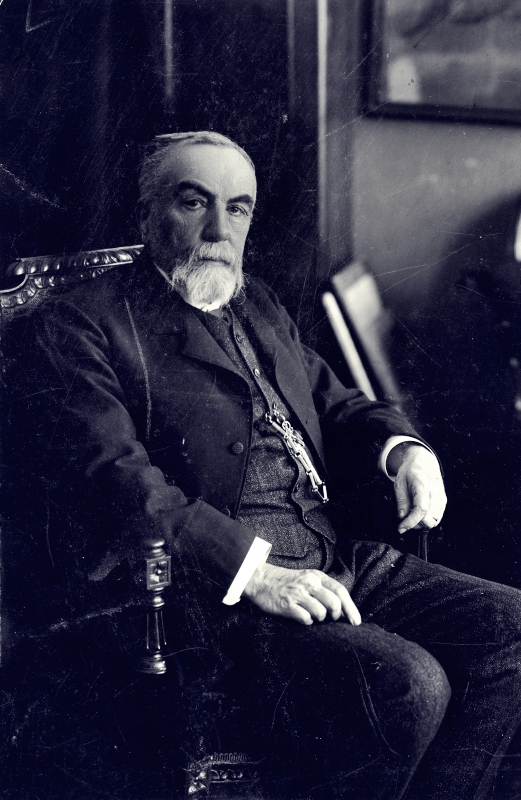






















































































































































































































.jpg)
.jpg)
.jpg)
.jpg)
.jpg)
.jpg)
.jpg)
.jpg)
.jpg)
.jpg)
.jpg)
.jpg)
.jpg)
.jpg)
.jpg)
.jpg)
.jpg)
.jpg)
.jpg)
.jpg)
.jpg)
.jpg)
.jpg)
.jpg)
.jpg)
.jpg)
.jpg)
.jpg)
.jpg)
.jpg)
.jpg)
.jpg)
.jpg)
.jpg)
.jpg)





























.jpg)

.jpg)
.jpg)
.jpg)
.jpg)
.jpg)
.jpg)




.jpg)
.jpg)
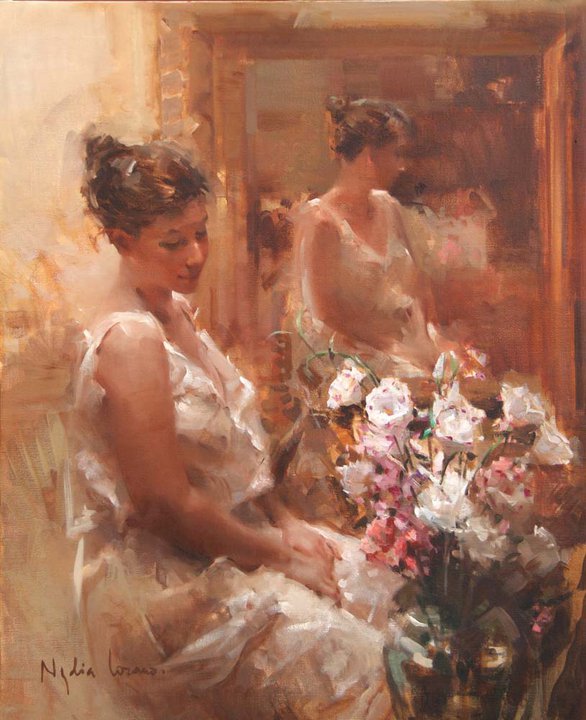



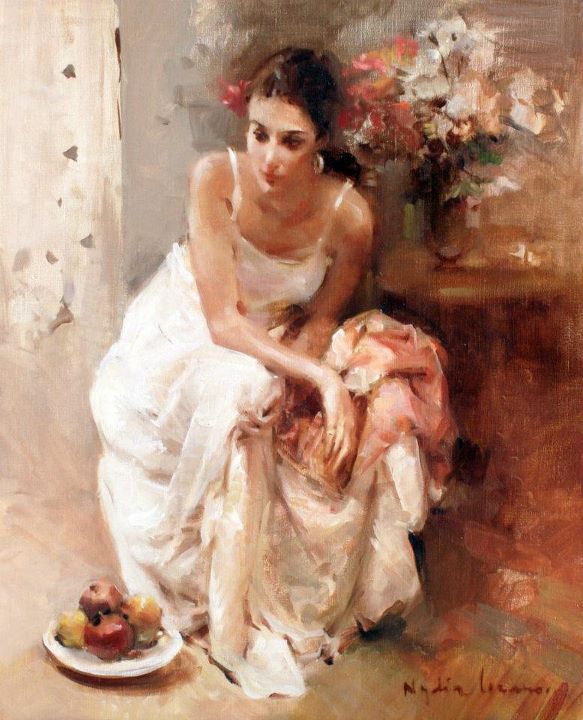
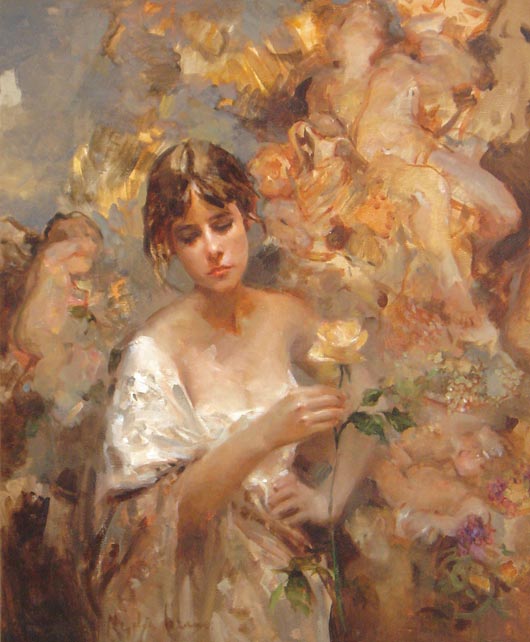
.jpg)
.jpg)
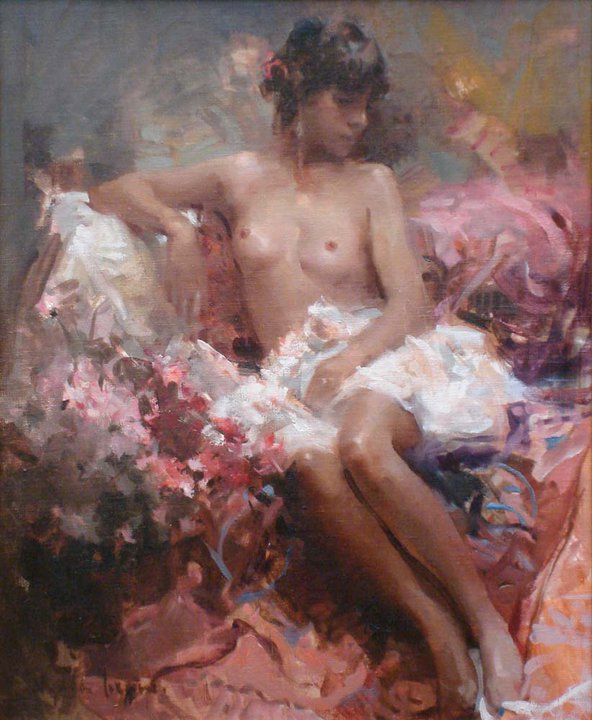
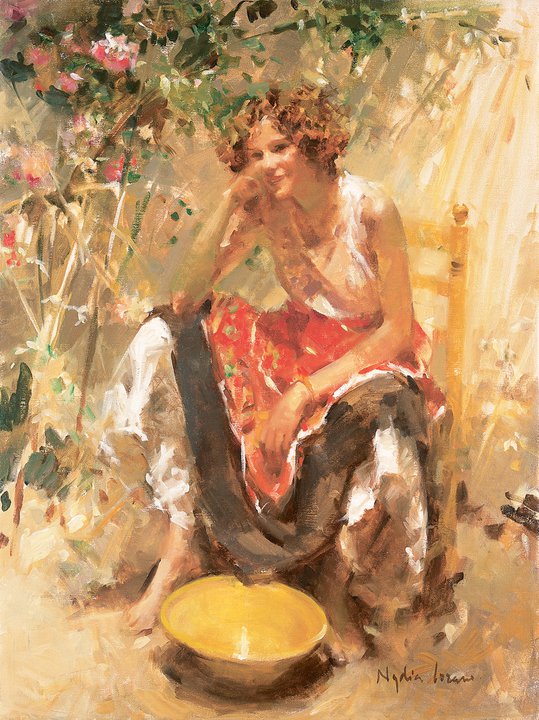
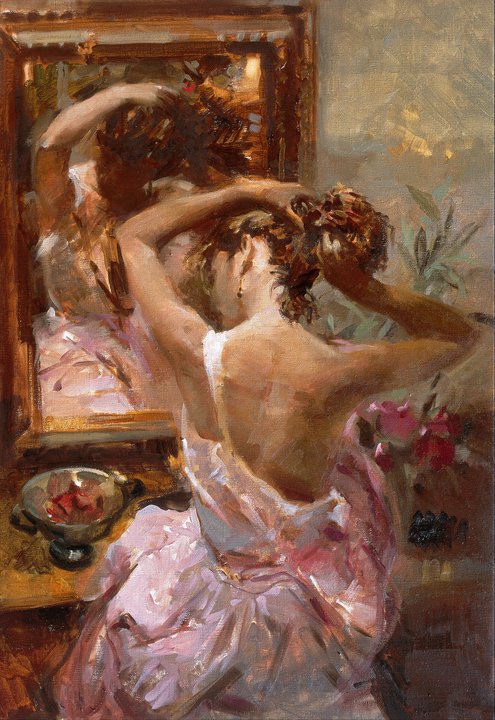


.jpg)

